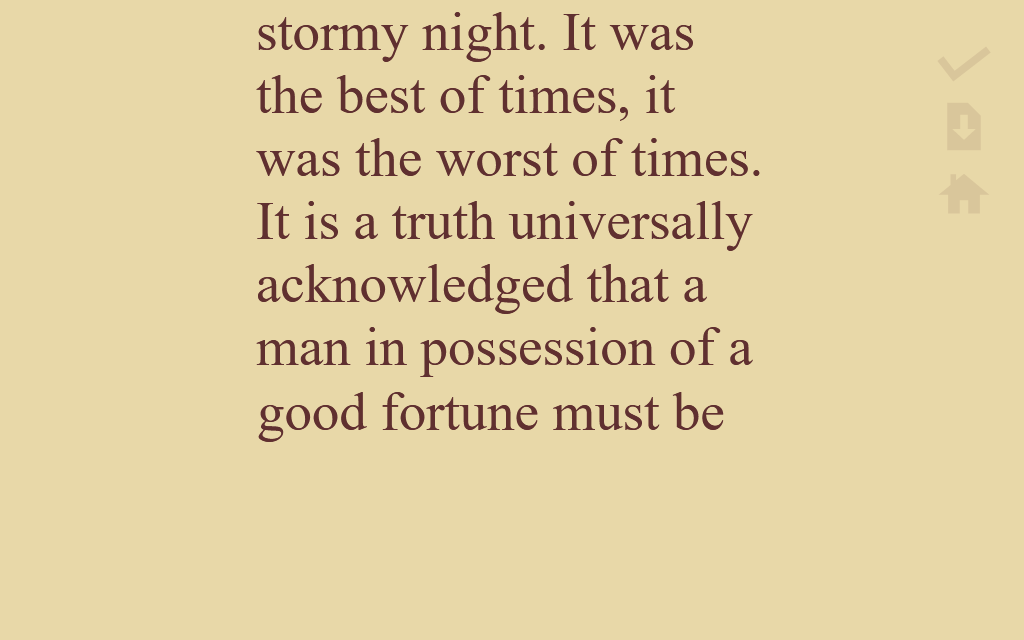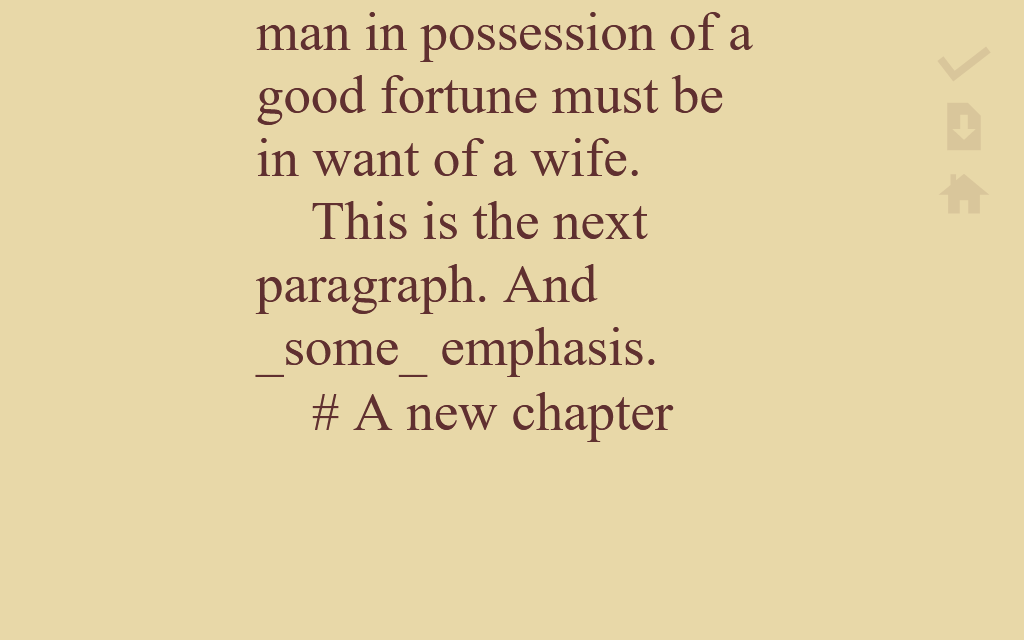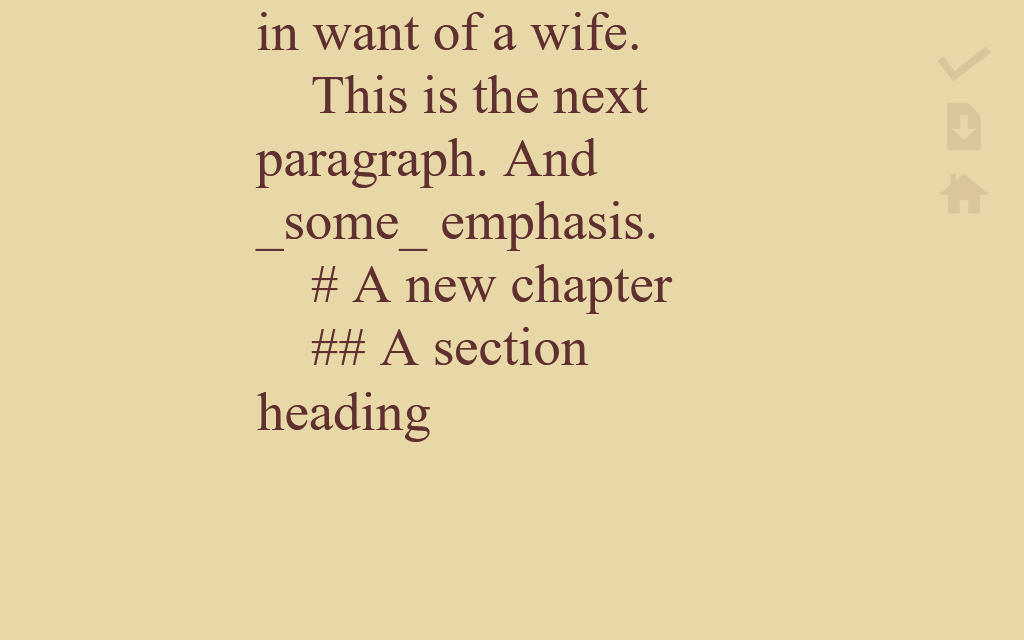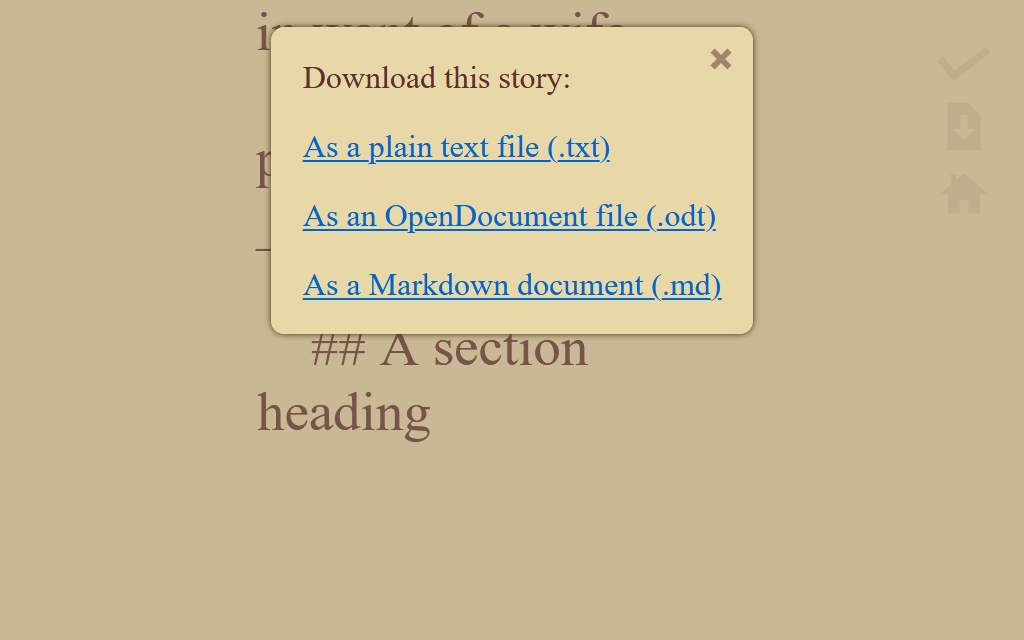When you start a story, you'll see a blank page like this:

You can then just start typing! To keep you focused on going forward, only a few lines fit on each line, and you can only edit the last line. Soon the page will look something like this:

See how only seven lines fit on the screen. When you type the next line, the first line disappears:

Don't worry, it's not gone, it will be saved, you just can't go back to it to obsess over it.
What you will notice is that if you press Enter, the next line will have indentation to show that you're on a new paragraph. If you press Enter and realize you didn't want to do that, you can press Backspace in order to make the current line part of the last paragraph.

You can wrap text in underscores _ to denote emphasis. To make a heading, start a paragraph with one or more pound signs #. Make sure to add a space after the last pound sign, otherwise it will be considered the start of a regular paragraph.
This only matters if you want to download your story in OpenDocument or Markdown format. If you download it as plain text, all the text and punctuation will be reproduced as you typed it.

You have probably noticed the icons on the top right. The top-most of those icon is the status indicator. It will show one of the following icons:
OK, everything is saved.
There are some unsaved changes. OK Write will save your changes automatically, but you can click on this icon if you want to save your changes right now.
OK Write is currently saving your changes. This should be quick, and you can continue writing without waiting while this is happening.
Something went wrong while saving! This might happen if you are currently not connected to the internet. Don't close the page if that happens, OK Write will try again in a bit. You can also click this icon to try again right away.
The other icons are both buttons:
Download your whole story.
Go back to the overview page; for if you want to work on another story, change your settings or log out.
If you click the download button, you'll get this dialog:

- Plain text is useful if you prefer to edit your story using a text editor. Each paragraph will be on its own line, but no further processing is done.
- The OpenDocument format is useful if you prefer to edit your story using a word processor. Headings and emphasis are created as described above, and no other processing is done.
- For those who prefer Markdown, this is also
an option. The only difference with plain text is that paragraphs are separated by two newlines
instead of one, and text inside a paragraph is word-wrapped. This means it is possible to insert
other Markdown syntax and it will be passed on to the generated file unchanged.
This was the end of the tutorial, I hope everything is clear!